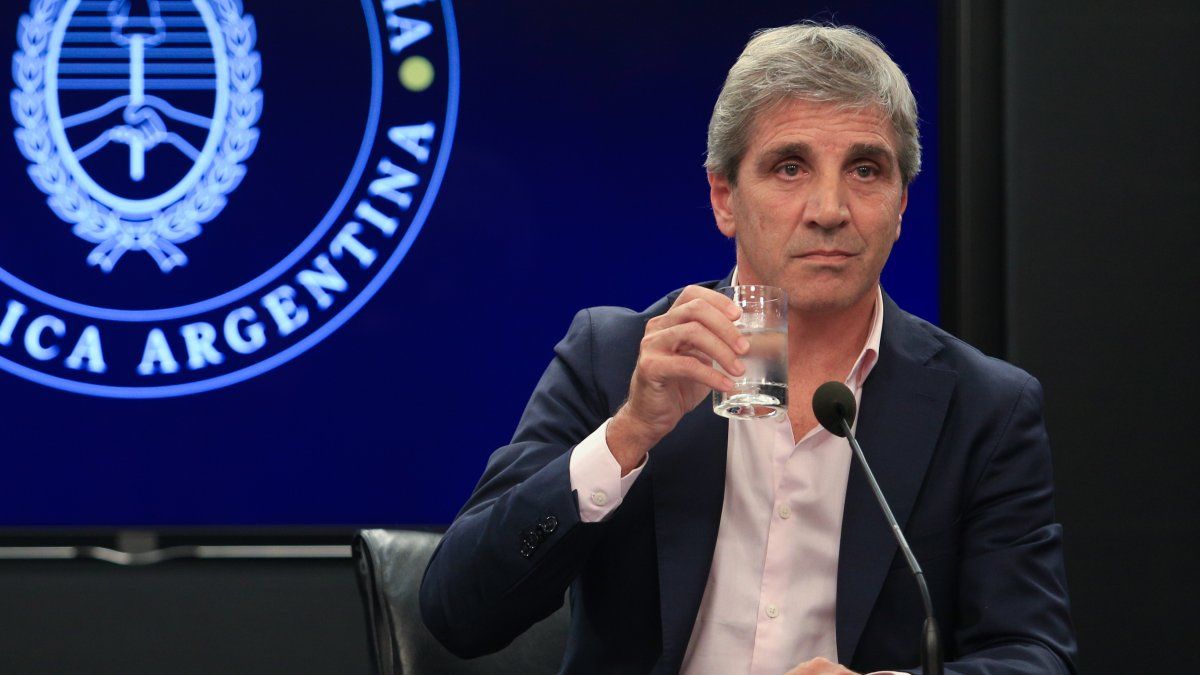Luis Caputo advanced this Friday in a new placement of debt in pesos. In the tender It raised almost $5 billion, more than double what it needed to renew the next maturities. With the surplus obtained, he will continue with the bond repurchases from the Central Bank. The novelty is that first time will buy you a title in dollars, the AL35.
Specifically, the Ministry of Finance, headed by Pablo Quirno, received 1,405 offers for a total nominal value of $4.83 billion, of which it awarded $3.9 billion. Measured at effective values, this involved the placement of $4.85 billion.
Of the three inflation-indexed securities that he had put on the table, The Government only awarded offers on the two longest bonds: the TZX26 and TZX27, both with zero coupon. In the first, he placed $1.83 billion. In the second, $3.02 billion. The two closed with a negative shear rate: 3.4% and 3.33%, respectively.
The other instrument that was on today’s menu, the Lecer “Market demand was concentrated in the titles 2026 (TZX26) and 2027 (TZX27) and this being consistent with our objective of stretching the maturity profile, it was decided to award the entire auction in these instruments,” they stated at the Palacio de Tax authorities.
image.png
The result, celebrated by the economic team, counted support from the monetary authoritythat through the granting of liquidity insurance (known as puts or purchase options) encourages banks to migrate their holdings from Passes (remunerated BCRA debt) to Treasury securities. In fact, based on this policy, the participation of financial entities in tenders has been increasing (in the last one it was at least 88%).
The background is official strategy to reduce the stock of paid liabilities, which Javier Milei considers a key step to lift the exchange rate in the short term and pave the way towards eventual dollarization. In addition to the aforementioned migration of banks, the combo includes the liquefaction of fixed terms and Passes (with rates that lose by a landslide compared to inflation), the dollarization of BCRA liabilities through BOPREAL and the brake on assistance monetary to the treasury. In other words, the shock adjustment, the monetary squeeze and the blender plan in full operation.
Repurchase of debt in dollars
On the other hand, Economía announced that it will maintain its policy of use the surplus financing obtained in its tenders to repurchase Treasury securities from the BCRA that he has in his possession. Until now the buybacks had been of different debt instruments in pesos, but This time it will be done with the bonus in dollars under local legislation AL35issued in the 2020 exchange.
“The financial fiscal balance of the National Treasury eliminates the need to take on new debt. For this reason, the financing obtained above the maturities will be used to repurchase the AL35 sovereign bond in the BCRA portfolio for approximately 30% of the monetary base,” they stated from Economía. This Thursday, it was also reported that in January the National Public Sector recorded a financial surplus of $518,408 million, in a seasonally favorable month and given the strong adjustment of spending in real terms.
As maturities in the coming days amount to around $1.9 trillion, The AL35 buyback offer will be for an effective value of $2.95 billion. “This operation allows us to continue with the process of cleaning up the BCRA’s balance sheet, reducing the monetary overhang and improving the financial burden of the Treasury debt,” they added at the Treasury Palace.
Although initially the bet is that the buyback will result in the burning of part of the economy’s pesos, It is not certain that the net effect of this operation will be that of a monetary contraction. This is influenced by the magnitude of the migration of banks from BCRA debt to Treasury debt on this occasion. Gabriel Caamano, director of Consultora Ledesma, explained it like this: “It depends on where the weights of the net financing of the tender came from. In the last two operations, more pesos came out of the Passes than those canceled by the BCRA.”
For Nicolas RivasBAVSA trader, the AL35 buyback is a two-way play. “They are taking pesos at a negative rate in real terms for three and four years, and they are buying back debt in dollars at very low parities. And I think that perhaps it also has a political side to show that, on the one hand, they issue BOPREAL but, on the other, they lower the dollar debt that the public sector has,” he said in dialogue with Ámbito. And from the market’s perspective, he considered that it works as a reinforcing signal for the Government’s message regarding “that they are going to pay the debt.”
Meanwhile, before the end of February the Government will face another large expiration that will have to be renewed. It is a dual bond (which adjusts for the official dollar or for inflation, whichever pays more) for which you will have to pay more than $4 billion.
Source: Ambito
I am a 24-year-old writer and journalist who has been working in the news industry for the past two years. I write primarily about market news, so if you’re looking for insights into what’s going on in the stock market or economic indicators, you’ve come to the right place. I also dabble in writing articles on lifestyle trends and pop culture news.




